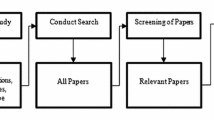Introduction and Motivation
Analyzing the properties of algorithms is fundamental for drawing conclusions on their applicability, for the comparison of different algorithms, and for the development of new ideas that help to improve existing algorithms. An algorithm that solves a problem optimally while the time and space it consumes grow not too fast is the ideal case. Unfortunately, such algorithms are not known to exist for many optimization problems that occur frequently in industrial applications. For these problems one can look for trade-offs between different properties like, e. g., the quality of the solution and the running time of the algorithm. Another possibility for coping with these problems is to relax the requirement that an algorithm has to work well on all instances of the considered optimization problem. It is sufficient if the algorithm performs well on those instances that occur typically in the considered application.
Access this chapter
Tax calculation will be finalised at checkout
Purchases are for personal use only
Preview
Unable to display preview. Download preview PDF.
Similar content being viewed by others
Editor information
Editors and Affiliations
Rights and permissions
Copyright information
© 2010 Springer-Verlag Berlin Heidelberg
About this chapter
Cite this chapter
Ackermann, H., Röglin, H., Schellbach, U., Schweer, N. (2010). Chapter 4. Analysis of Algorithms. In: Müller-Hannemann, M., Schirra, S. (eds) Algorithm Engineering. Lecture Notes in Computer Science, vol 5971. Springer, Berlin, Heidelberg. https://doi.org/10.1007/978-3-642-14866-8_4
Download citation
DOI: https://doi.org/10.1007/978-3-642-14866-8_4
Publisher Name: Springer, Berlin, Heidelberg
Print ISBN: 978-3-642-14865-1
Online ISBN: 978-3-642-14866-8
eBook Packages: Computer ScienceComputer Science (R0)




